Aspen Tree Varieties & Types You Should Know About
Among the many different types of aspen trees, the most common ones are Quaking aspen, Bigtooth aspen, European aspen, Chinese aspen, Japanese aspen, etc. Have a look!
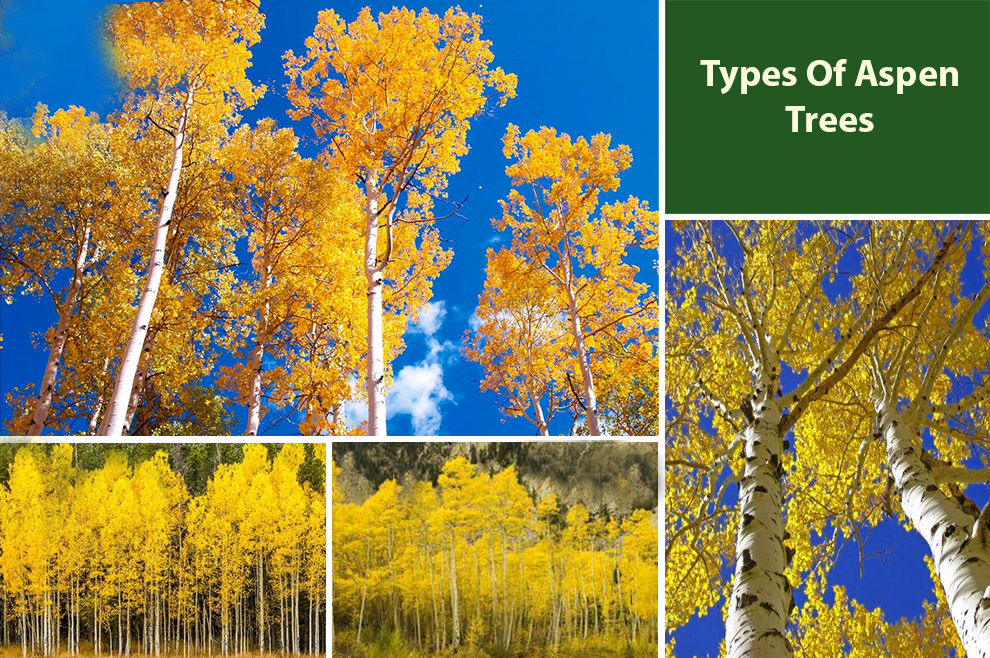
In the enchanting realm of woodland wonders, where the rustling leaves form an orchestra of whispers, stands a majestic family of trees that paint the landscape with their vibrant hues. Yes, we are talking about the Aspen trees.
There are several types of Aspen trees. These beautiful arboreal marvels, known for their graceful charm and ethereal beauty, look captivating in all different types.
The most delightful variety is the Quaking Aspen, known for its shimmering leaves that flutter like a thousand butterflies in the gentlest breeze. There is also the Bigtooth Aspen, proudly depicting its distinctively toothed foliage. And we cannot forget the European Aspen, exuding an Old-World elegance.
Below, we will unveil these and other intriguing Aspen tree varieties.
Aspen Tree Identification
| Family genus | Populus |
| Another name for Aspen tree | Poplar |
| Aspen tree leaves | Heart-shaped, toothed margins |
| Aspen bark | Smooth (often with white color) |
| Flower or fruit | Catkins (small flowers) |
| Bloom time | Spring |
| Aspen tree height | Varies by species (20-80+ feet) |
Aspen Tree Information
Botanically called the Populus tremuloides, Aspen trees captivate the natural world with their remarkable adaptations and unique features.
One of the standout attributes of the Aspen trees is their leaves, flattened on slender, long stems, allowing them to quiver and tremble with the slightest breeze, bagging them the nickname Quaking Aspen.
This leaf adaptation helps prevent wind damage and regulate moisture loss. Another notable attribute is their striking white bark, which stands out prominently against the forest’s green backdrop.
Fortunately, the Aspen Trees are highly adaptable. They can thrive in different environments. You can find them across North America, from Mexico to Alaska.
Further, their geographic distribution spans different habitats, from high mountain to lowland regions. These tenacious trees depict their resilience by being able to colonize distributed areas like burnt forests, quickly restabilizing themselves, and supporting a diverse range of wildlife.
Beyond their aesthetic appeal, Aspen trees also have a crucial ecological role. Their root systems usually form clonal colonies, where several trees are genetically identical, creating vast interconnected communities.
This interconnectedness amplifies the Aspen tree’s ability to endure environmental challenges and makes them vital contributors to ecosystem and biodiversity stability. Aspen trees, with their remarkable adaptations and unique features, are marvels of nature. They enrich the landscapes they inhabit and inspire admiration amongst nature enthusiasts globally.
Kinds of Aspen Trees
- Quaking Aspen (Populus tremuloides)
- Bigtooth Aspen (Populus grandidentata)
- European Aspen (Populus tremula)
- Chinese Aspen (Populus davidiana)
- Korean Aspen (Populus serotina)
- Swedish Aspen (Populus tremula)
Let’s delve into the world of Aspen trees and discover the wonders within their leafy embrace.
1. Quaking Aspen (Populus tremuloides)
It stands out as an emblematic symbol of the wilderness. It has mesmerizing leaves that jitter and flutter even at the gentlest breeze. These Aspen trees have heart-shaped leaves and depict a glossy green hue on the upper side with a silvery-white undertone.
It demonstrates a captivating blend of colors in the sunlight. Their chalk-white bark establishes a striking contrast against the lush green backdrop.
It is an adaptable species that thrives in different habitats across North America, from high mountain slopes to lowland valleys. Its sandy, well-drained, or loamy soils help it colonize forest clearings and disturbed areas.
Quaking Aspen colonies usually form extensive clonal networks, where countless trees are genetically identical, making them a remarkable sight.
Moreover, they are resilient and hardy, a crucial attribute for survival in different ecosystems, enriching the landscape with their timeless allure and supporting diverse wildlife.
Why not plant quaking Aspen?
From the different types of Aspen trees, the Quaking Aspen undoubtedly stands out as a stunning addition to the landscape. But as per experts, they may not be the best selection because of the following reasons:
- Aggressive root system
- Short lifespan
- Susceptibility to diseases and pests
- Quaking Aspen trees have a high water requirement.
- Root sprouting
- Messy dropping
Thus, instead of the Quaking Aspen, you can consider growing other Aspens, which are better suited for your region and hold a similar aesthetic appeal sans any potential drawbacks.
Native trees are adapted to local conditions and support local ecosystems and wildlife. You can consult local horticulturists for expert advice on picking trees based on your landscaping goals and location.
2. Bigtooth Aspen (Populus grandidentata)
Bigtooth Aspen, one of the unique kinds of aspen trees, boasts a matchless charm with a name that beautifully describes its most appealing features – the big, toothed leaves.
Unlike the Quaking Aspen relative, the Bigtooth Aspen presents leaves with saw-toothed, prominent edges, resembling dental instruments, hence its name. These vibrant green, glossy, and heart-shaped leaves establish a delightful spectacle during the growing season.
This deciduous species thrives in different habitats, from well-drained upland forests to moist lowlands, across eastern North America. With a preference for fertile soil, the Bigtooth Aspen contributes to the rich biodiversity of its surroundings.
Beyond its captivating foliage, the Bigtooth Aspen is a crucial part of the ecosystems, offering habitat and sustenance to numerous wildlife species.
Its ecological significance and unwavering beauty make it a valuable addition to conservation efforts and natural landscapes.
3. European Aspen (Populus tremula)
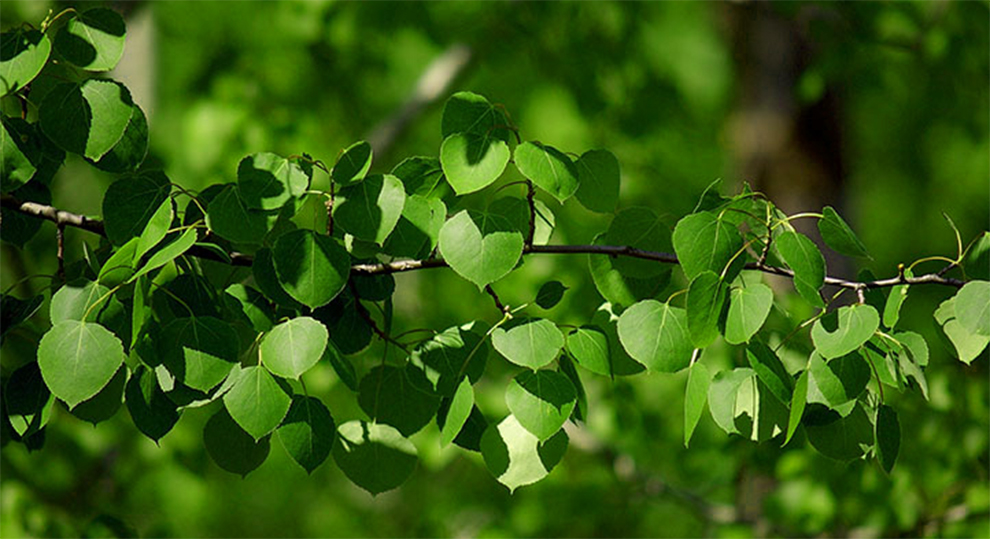
The European Aspen has a stunning presence in the woodlands of Europe and parts of Asia. This elegant deciduous tree is known for its slender, gently quivering leaves that lend an aura of grace to the surroundings.
The leaf’s finely serrated edges and circular shape let it shimmer and dance in the faintest breeze, giving the trees a distinctive character.
The European Aspen is highly adaptable. These Aspen tree varieties can thrive in different soil types, from loam to nutrient-poor sands. It prefers coolers climates, and you can spot it in diverse habitats, from riverbanks to mountain slopes and mixed forests.
Beyond its aesthetic allure, the European Aspen has a crucial ecological role. It offers food and habitat to several species, making it a vital contributor to the region’s biodiversity.
4. Chinese Aspen (Populus davidiana)
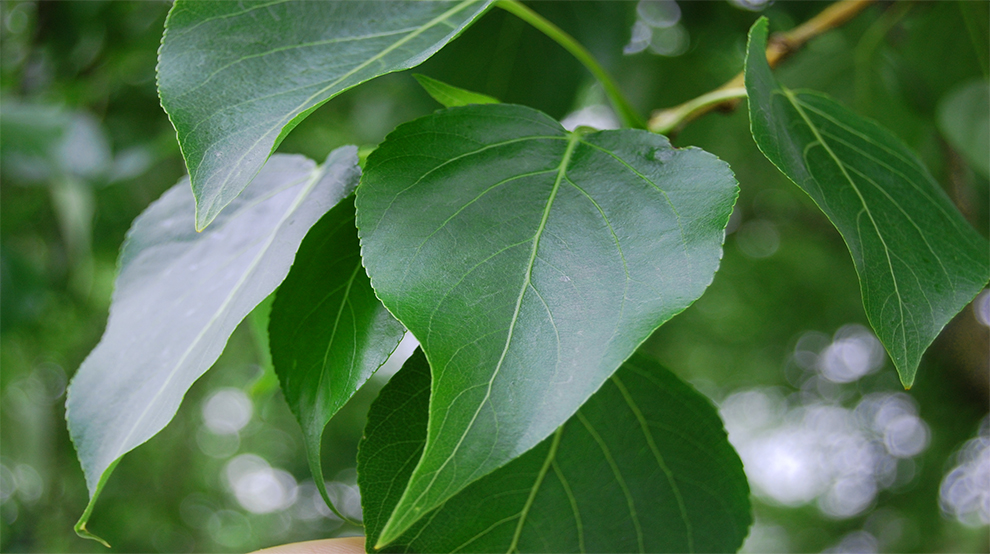
The Chinese Aspen grace the Eastern Asia landscape with their captivating presence. This deciduous tree is known for its strikingly smooth, grayish-white bark and slender columnar shape that exudes elegance.
One of its standout features is the heart-shaped, delicate leaves with finely toothed margins, resembling the handiwork of a skilled artisan.
Its leaves present a vibrant green hue and a delightful contrast against the pale bark during the growing season. You can spot them in different habitats, from mountain slopes to riverbanks, and they can endure harsh environmental conditions, including drought and cold temperatures.
With its aesthetic appeal and adaptability, the Chinese Aspen enriches the biodiversity of its native regions, offering a crucial habitat to different wildlife species. This captivating tree invokes appreciation and admiration amongst conservationists and nature enthusiasts.
5. Korean Aspen (Populus serotina)
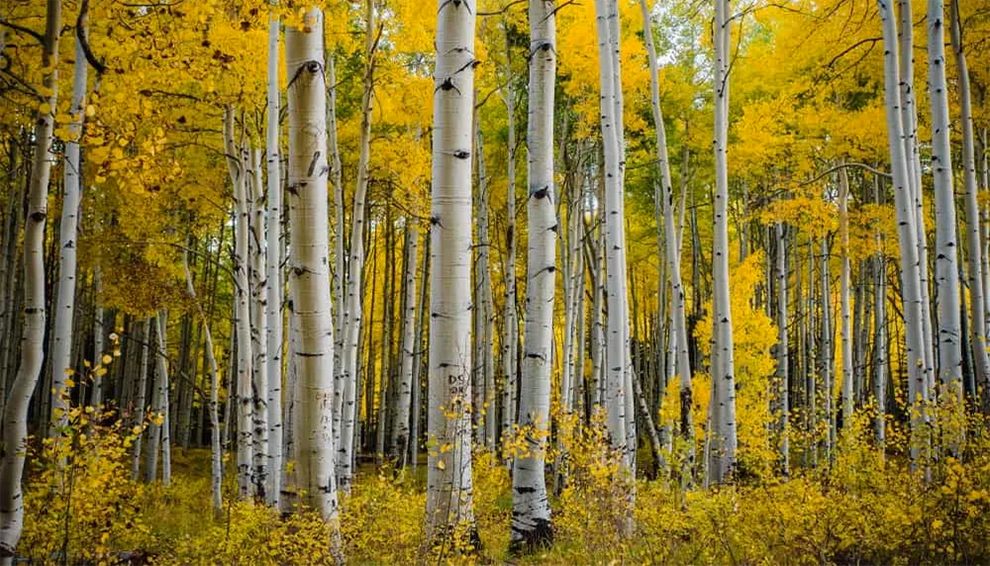
A captivating denizen of East Asia, the Korean Aspen enchants with its distinctive allure. This deciduous tree has chalky-white and smooth bark, which stands out against the lush green foliage. Its ovate and glossy leaves with finely serrated edges lend an elegant touch with their vibrant green color, which amplifies the tree’s splendor.
While they can adapt to different habitats, these Aspen tree species thrive in moist, well-drained soils across Japan, China, and Korea. Its resilience lets it flourish in temperate climates and endure the challenges of the changing seasons.
Beyond its aesthetic appeal, the Koreal Aspen has a crucial role in the ecosystem, offering sustenance and shelter to a diverse range of wildlife.
This enchanting tree stands out as a testament to the ecological significance and beauty of the Asian landscape, captivating the hearts of nature enthusiasts and contributing to the rich tapestry of the region’s natural heritage.
6. Swedish Aspen (Populus tremula)
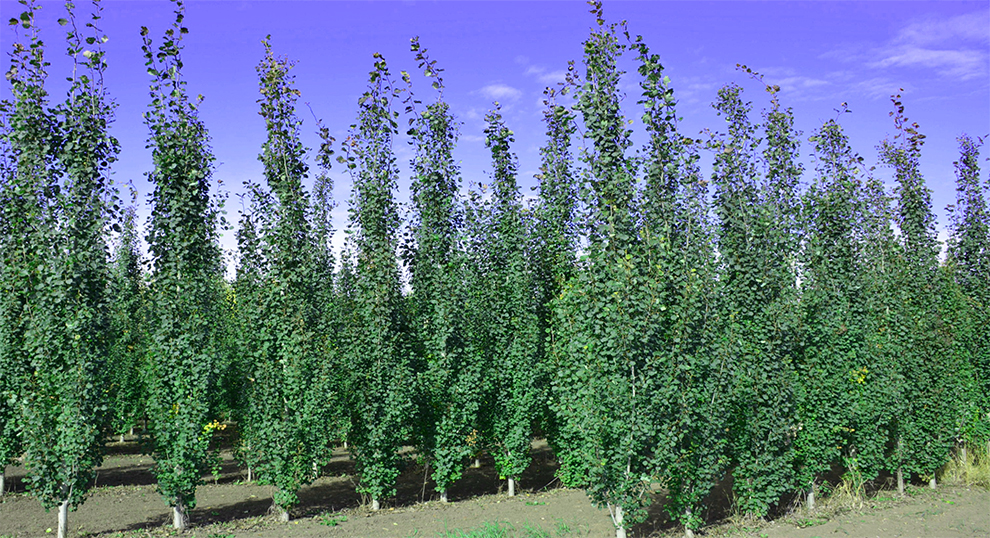
The Sweedish Aspen graces the Scandinavian landscapes with its mesmerizing presence. They are deciduous and are also called the Trembling Aspen. Swedish Aspen captivates the onlookers with its shimmery leaves that tremble in the gentlest breeze, establishing an enchanting display of movement.
They have distinctive heart-shaped leaves with finely serrated margins that amplify the Swedish Aspen’s charm, presenting a delightful green hue across the growing season. Its striking silvery-gray bark adds an ethereal touch to the woodland scenery.
These trees can thrive in different habitats, from high-altitude mountain regions to lowlands, and are known for their ability to endure colder climates.
With its picturesque beauty and ecological significance, the Swedish Aspen has a crucial role in supporting diverse ecosystems, providing sustenance and habitat to different wildlife species.
This treasured tree depicts the natural wonders of Scandinavia, embodying resilience, grace, and timeless allure.
Some More Different Types Of Aspen Trees
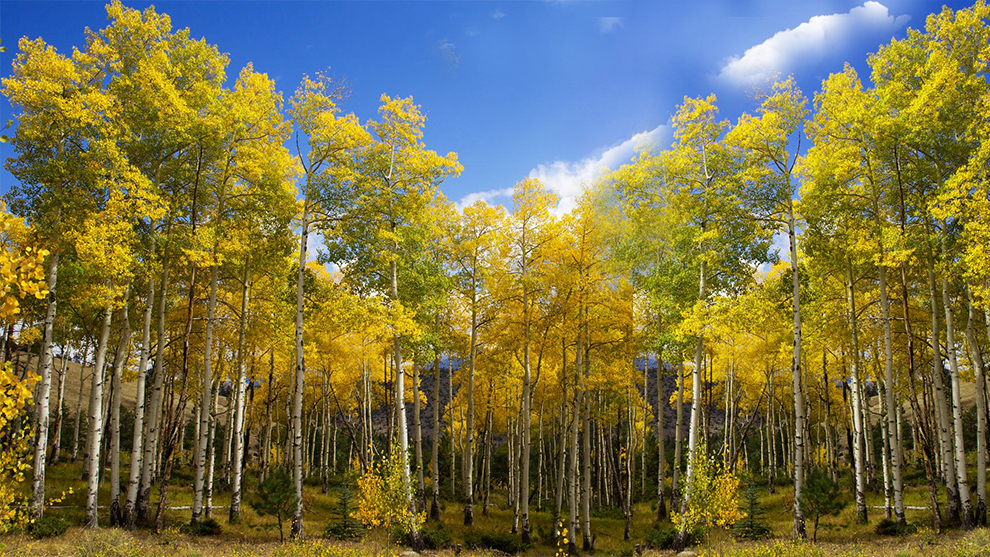
Beyond the popular varieties listed above, you must know of a few other Aspen species. These are as follows:
A. Balsam Poplar (Populus balsamifera): Also called theBalm-of-Gilead, the Balsam Poplar exudes a delightful fragrance from its buds. It is a fast-growing variety characterized by its heart-shaped leaves and serves as a vital habitat for wildlife
B. White Poplar (Populus alba):With its distinctive white underside of leaves, The White Poplar adds a touch of elegance to the landscape. It is a hardy specie known for its rapid growth. You will find it planted in the landscape for its ornamental appeal.
C. Black Poplar (Populus nigra): A native to Europe, the Black Poplar boasts of a strikingly dark bark, which contrasts its lustrous green leaves. It is a stately and tall tree with historical significance, which offers valuable shelter to numerous bird species.
Hybrid Aspen Trees
Hybrid Aspen trees stem from the crossbreeding of different Aspen tree species, yielding distinctive traits and characteristics.
Some popular Hybrid varieties of Aspen include the Swedish Columnar Aspen (Populus tremula × P. tremuloides), known for its upright, slender growth and captivating trembling leaves.
Another popular hybrid is the Canadian Aspen (Populus × Canadensis), a blend of the Bigtooth Aspen and the European Aspen, depicting resilience and fast growth.
These hybrids usually showcase superior qualities, such as increased growth rates, enhanced disease resistance, and adaptability to diverse environments.
With their ecological benefits and charming features, the hybrid Aspen trees have become a favored choice for conservationists, landscape designers, and nature enthusiasts, offering a captivating blend of different traits from their parent species.
Related: Aspen Tree Lifespan | How To Plant Aspen Trees
Which Are The Aspen Trees That Do Not Spread?
Some varieties, such as the Quaking Aspen, have an extensive root system, which forms large clonal colonies. On the contrary, some cultivators, such as the Swedish Columnar Aspen (Populus tremula × P. tremuloides), are typically upright. They are less susceptible to spreading.
Are There Small Aspen Trees?
Yes.
Some Aspen tree varieties, such as the Sweedish Aspen and the White Poplar, have a compact growth habit and are suitable for smaller gardens and landscapes.
Are Aspen Trees Useful?
Yes, Aspen trees are valuable for multiple purposes. They are valued for their wood, which goes into construction, paper production, and furniture.
Their ecological significance includes offering food and habitat for wildlife and stabilizing soil. Further, they present recreational opportunities and aesthetic beauty, making them beloved components of natural landscapes.
